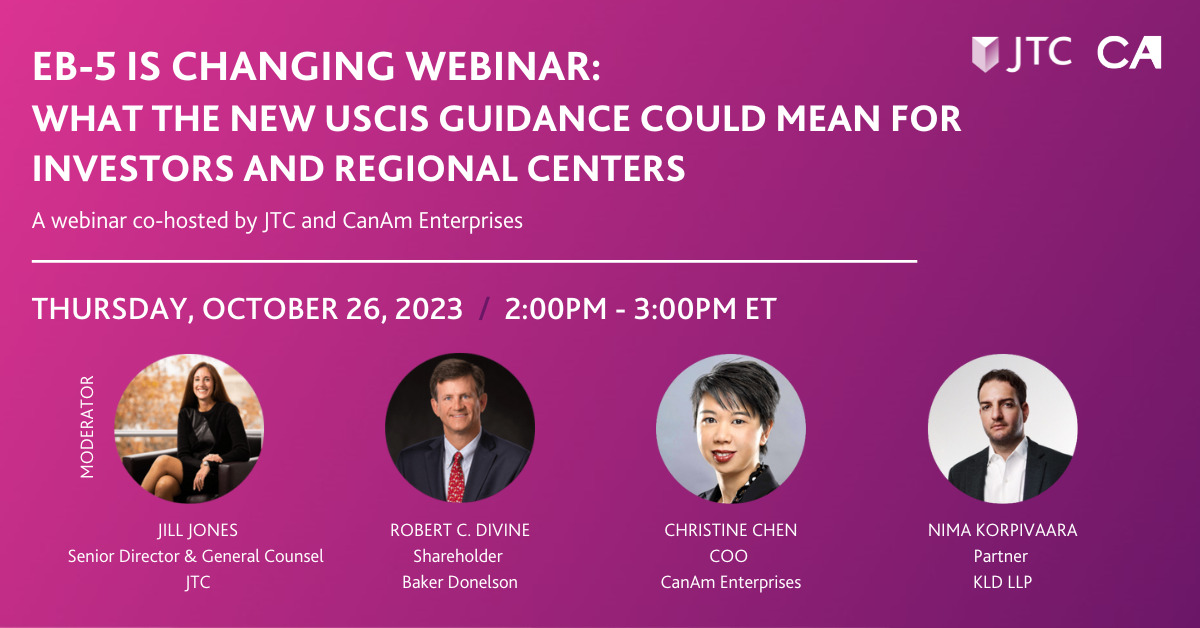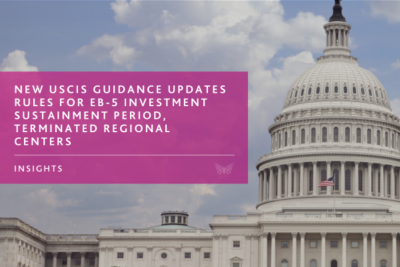Investing Smart: Exploring EB-5 Deal Structures
In the evolving landscape of the EB-5 Immigrant Investor Program, understanding different types of EB-5 investment structures has become increasingly critical for investors and developers. This discussion delves into the nuances of debt and equity models, the varying deal structures involved, and the considerations investors should keep in mind when evaluating EB-5 projects. This article is based on a conversation between Pete Calabrese, CEO of CanAm Investor Services, and Rohit Kapuria, a partner at Saul Ewing.
Types of EB-5 Deals: Debt vs. Equity Models
The EB-5 program offers two primary models for structuring investments: the debt model and the equity model. Each comes with unique implications for the investor, depending on the nature of the project, the developer’s needs, and the involvement of financial institutions.
- Debt Model: In a debt structure, the EB-5 capital is typically positioned as a loan to the project or development company. Debt financing can occur at different levels of the capital stack, such as:
Senior Loan: EB-5 funds are the primary source of financing after the developer’s equity. This type of investment can offer relatively lower risk because senior lenders have the first claim on project assets.
Mezzanine Financing: EB-5 capital can also be used as mezzanine financing, coming in between senior loans and equity. This structure provides more flexibility for developers but can carry higher risk compared to a senior loan.
Second Position: EB-5 funds can take a secondary position in the capital stack, below the senior loan but above the developer’s equity.
- Equity Model: EB-5 funds are also used as equity investments, often as preferred equity. In this structure, investors own a portion of the project, but do not have direct participation in project management. Equity deals are often preferred for smaller projects, especially those under $8-16 million. This model can be advantageous in projects where senior lenders are not comfortable with additional debt layers or when the project’s capital stack requires more flexibility.
Key Considerations for EB-5 Investors
Investors evaluating EB-5 projects must focus on a few critical elements:
- Capital Security: Investors should assess how their capital is secured within the project, whether through collateral or seniority in the capital stack.
- Job Creation: Since the EB-5 program requires that each investment results in the creation of at least 10 jobs, the structure should ensure robust job creation numbers to mitigate the risk of visa denial.
- Developer Experience: A developer’s track record and familiarity with EB-5 structuring is crucial. Sophisticated players like CanAm understand the intricacies of EB-5 financing and can more effectively communicate with financial institutions and investors.
Trends in EB-5 Project Types
With the passage of the EB-5 Reform and Integrity Act, there has been a shift in focus toward projects in rural areas due to their favorable visa processing timelines and higher set-asides for EB-5 visas. The new legislation has driven interest in a diverse range of project types:
- Real Estate Projects: Traditionally, real estate has been the dominant asset class for EB-5 investments, especially after the 2008 financial crisis. Typical subcategories include hospitality, mixed-use developments, and residential projects. Real estate remains a popular choice due to its tangible nature and straightforward job creation models.
- Alternative Asset Classes: Beyond real estate, EB-5 investors are now considering projects in green energy, broadband infrastructure, and other utility-focused developments. These projects often benefit from additional federal or state subsidies, potentially making them more attractive from a risk-return standpoint.
CanAm’s Approach to EB-5 Project Structuring
CanAm has been a leader in structuring EB-5 projects, with a focus on providing conservative investment options that meet both immigration and financial goals. We have historically preferred the debt model due to its lower risk and predictable timelines for capital repayment. CanAm’s approach strives to ensure we have more collateral and seniority in the capital stack, thus offering a more secure pathway for EB-5 investors.
With the new legislative landscape, CanAm has shifted focus to include more projects in rural areas. Notably, we have also explored alternative asset classes such as green hydrogen production and broadband deployment, which align with federal subsidies and legislative incentives like the Inflation Reduction Act. These projects not only qualify for EB-5, but also tap into broader federal initiatives, which we believe gives additional layers of project viability.
Looking Ahead: The Future of EB-5 Investments
With interest rates fluctuating and the broader economic environment evolving, the EB-5 program remains a stable source of funding for developers. Demand for EB-5 financing is expected to remain strong regardless of economic cycles. This sustained demand is partly due to the program’s unique positioning as an alternative funding source that complements traditional financing structures.
CanAm and other sophisticated regional centers are likely to continue pursuing a diverse mix of projects, balancing real estate with alternative asset classes to meet the needs of a broader investor base. As the program evolves, investors should remain vigilant in their due diligence, focusing on projects that not only satisfy immigration requirements but also align with broader economic trends.
Conclusion
EB-5 investors face an array of options when it comes to structuring their investments. Whether through debt or equity, understanding the nuances of each model and how they fit within the overall project capital stack is essential for making informed decisions. As the EB-5 landscape continues to shift in response to legislative changes and economic conditions, savvy investors will need to remain adaptable and well-informed.




